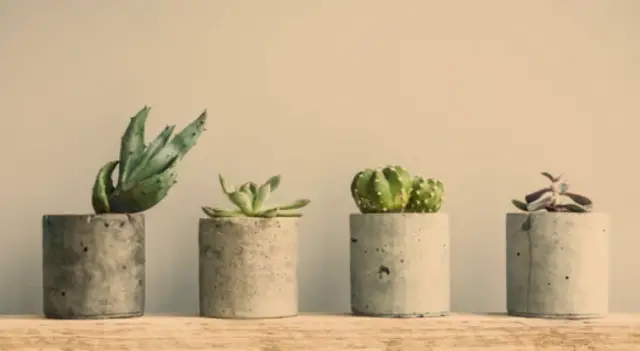Due to their distinctive appearance, low maintenance needs, and capacity to flourish in arid environments, succulent plants have become extremely popular among gardening aficionados.
They provide a sense of beauty and charm to any living environment because they are living sculptures.
Yet, maintaining the health and longevity of succulents necessitates a thorough comprehension of their requirements and particular maintenance procedures.
Succulent Plants

What Are Succulents?
Succulents are a group of plants characterized by their thick, fleshy leaves and stems that store water. These remarkable adaptations allow them to survive in regions where water is scarce and challenging to find. The term “succulent” comes from the Latin word “succus,” which means juice or sap, highlighting the unique ability of these plants to store water within their tissues.
Types of Succulents and Popular Varieties
The world of succulents is vast and diverse, offering an array of shapes, sizes, and colors to choose from. Some popular succulent varieties include Echeverias, known for their rosette-like arrangements and vibrant colors; Aloe Vera, renowned for its soothing gel; Haworthias, with their striking patterns and windowed leaves; and Jade Plants, a classic favorite among beginners due to their ease of care and symbolism of prosperity. Each variety presents its unique allure and character, making succulent collecting an exciting and rewarding hobby.
How Do Succulents Adapt to Arid Environments?
Succulents have evolved over millennia to thrive in arid environments, where water availability is limited. Their unique anatomical features enable them to withstand drought and conserve water effectively.
These adaptations include specialized epidermal cuticles that reduce water loss through evaporation, water-storing cells within their leaves and stems, and crassulacean acid metabolism (CAM), a unique photosynthetic pathway that allows them to take in carbon dioxide at night and conserve water during the day.
Understanding these adaptations is crucial for replicating their natural habitat in our care.
Essential Factors for Succulent Care
Light Requirements
Proper lighting is essential for the health and appearance of succulents. Most succulents thrive in bright, indirect sunlight, which mimics the conditions of their native habitats.
Placing them near a south-facing window or under grow lights with adjustable settings can provide them with the optimal amount of light.
However, some succulent varieties, such as Haworthias and Gasterias, prefer more shade and can be placed in slightly darker areas of your home.
Watering Guidelines
Overwatering is the leading cause of succulent mortality. Succulents are adapted to survive long periods without water, making them prone to rot if exposed to excessive moisture.
To avoid overwatering, it’s essential to let the soil dry out completely between waterings.
A general rule of thumb is to water your succulents when the top inch of soil is dry. Additionally, it’s best to water from the base of the plant to prevent water from sitting in the rosettes or leaves, which can lead to rot.
Soil and Potting
Selecting the right soil mix and potting practices can significantly impact the health and longevity of your succulents.
The ideal soil mix for succulents is well-draining and aerated, allowing excess water to escape quickly and preventing root rot.
A mixture of potting soil, perlite, and coarse sand is commonly recommended.
When repotting, choose a container with drainage holes to ensure proper water flow. Repotting should be done when the plant outgrows its current container or every few years to refresh the soil and promote healthy root growth.
Temperature and Environment
Preferred Temperature Range
Succulents generally prefer moderate temperatures, ranging from 65°F to 80°F (18°C to 27°C) during the growing season. However, they can tolerate higher temperatures in the summer, as long as they have sufficient water and are not exposed to direct, scorching sunlight.
In the winter, most succulents appreciate cooler temperatures ranging from 50°F to 60°F (10°C to 15°C) during their dormancy period.
Protecting Succulents in Extreme Conditions
During hot summers or cold winters, special care is required to shield succulents from extreme temperatures. To protect them from the scorching heat, consider providing some shade or moving them to a cooler location during the hottest part of the day.
In freezing temperatures, it’s crucial to keep them indoors or use protective coverings, such as frost cloths, to prevent damage.
Humidity Levels and How to Maintain Optimal Levels
Succulents are adapted to low-humidity environments, but some varieties may require slightly higher humidity levels, especially when grown indoors.
In arid regions, indoor humidifiers can be beneficial for maintaining adequate humidity levels. Alternatively, grouping succulents together can create a microclimate with slightly higher humidity, benefiting the plants within the cluster.
Pruning and Propagation
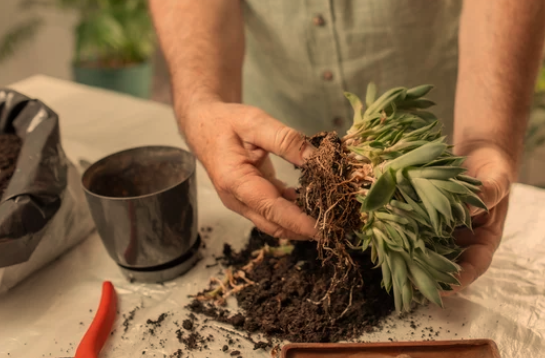
Trimming and Removing Dead Leaves
Pruning is an essential part of succulent care as it helps maintain a tidy appearance and promotes airflow, reducing the risk of fungal infections. Remove any dead or yellowing leaves, as well as spent flower stalks, using clean, sharp scissors or pruning shears.
Promoting Growth through Pruning
Strategic pruning can encourage new growth and create compact, bushier succulents. For example, removing the top rosette of an Echeveria or Graptopetalum can encourage branching and the development of multiple new rosettes. When pruning, ensure you cut above a leaf node or joint to encourage the plant to produce new growth from that point.
Propagation Techniques: Growing New Succulents from Cuttings
Propagating succulents allows you to multiply your collection and share your love for these plants with others.
Leaf and stem cuttings are the most common methods of propagation. For leaf cuttings, gently twist or cut a healthy leaf from the parent plant, allow it to callus for a day or two, then place it on top of well-draining soil until new roots and a baby plant form. For stem cuttings, snip a healthy stem segment and allow it to callus before inserting it into the soil.
Fertilization and Nutrition
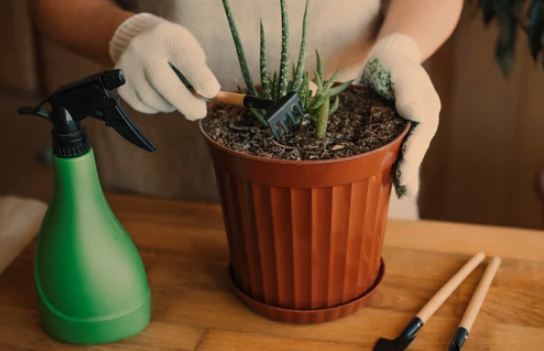
Nutrient Requirements
Succulents have modest nutrient needs, primarily requiring nitrogen, phosphorus, and potassium for healthy growth.
However, they do not require as much fertilization as other plants, and over-fertilizing can lead to salt build-up and nutrient imbalances.
Use a balanced, water-soluble fertilizer diluted to half strength during the growing season (spring and summer) and reduce or eliminate fertilization during their dormancy (fall and winter).
Selecting Suitable Fertilizers
When choosing a fertilizer for succulents, opt for one with a balanced NPK ratio, such as 10-10-10 or 5-10-5.
Avoid high-nitrogen fertilizers, as they can encourage excessive growth at the expense of plant health. Additionally, consider using organic fertilizers, which release nutrients slowly and promote soil health.
How Often and When to Fertilize
During the active growing season, fertilize your succulents once every 2-4 weeks. However, always follow the manufacturer’s instructions and adjust the frequency according to your plant’s response and growth rate. In winter, reduce or eliminate fertilization, as succulents are generally dormant during this time.
Common Pests and Diseases
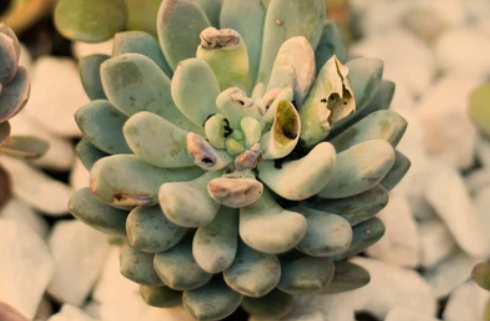
- Identifying and Preventing Common Pests While succulents are relatively pest-resistant, they can still fall victim to common intruders like mealybugs, aphids, and spider mites. Regularly inspect your plants for signs of pests and take swift action if you detect an infestation. Isolate affected plants to prevent the pests from spreading to others.
- Treating Pests and Diseases Naturally Chemical-free remedies are often the best solution for dealing with pests and diseases, as they protect your plants while preserving the environment. Introduce natural predators like ladybugs or use a homemade insecticidal soap made from water, mild soap, and neem oil to control pests effectively.
- Quarantine and Isolation Measures Whenever you introduce new plants to your collection, it’s essential to quarantine them for a few weeks to monitor for any signs of pests or diseases. This precautionary measure can prevent potential infestations from spreading to your existing plants.
Seasonal Care and Tips
- Preparing for Seasonal Changes As the seasons change, so do the needs of your succulents. During the transition from winter to spring, gradually increase watering and resume regular fertilization to support new growth. In autumn, gradually reduce watering and cease fertilization to allow your succulents to prepare for dormancy.
- Winter Dormancy and Protection Many succulents enter a dormant phase during winter, characterized by slower growth and reduced water uptake. During this period, it’s best to limit watering to prevent overhydration, as dormant succulents are more susceptible to root rot. Additionally, ensure your plants are protected from freezing temperatures and consider moving potted succulents indoors if temperatures drop drastically.
- Spring and Summer Growth Tips In spring and summer, your succulents will be actively growing and may require more water and sunlight. Monitor their growth and adjust watering and light exposure accordingly. Prune and propagate during this time to take advantage of their natural growth cycle.
Indoor vs. Outdoor Succulent Care
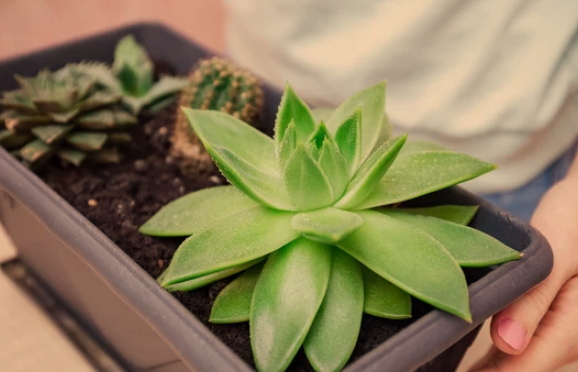
- Pros and Cons of Indoor Cultivation Growing succulents indoors has its advantages, such as the ability to control the environment and protect them from harsh weather. However, indoor conditions may require extra attention to lighting and humidity to ensure your succulents thrive.
- Creating an Ideal Indoor Environment To create an ideal indoor environment, place your succulents near a south-facing window or under grow lights with adjustable settings. Monitor the humidity levels, especially during winter when indoor heating can dry out the air. A humidifier or grouping succulents together can help maintain suitable humidity levels.
- Outdoor Gardening Considerations If you’re cultivating succulents outdoors, take advantage of their ability to withstand natural conditions. Group succulents with similar light and water requirements together to create microclimates that cater to their needs. Consider providing shade or using shade cloth during the hottest parts of the day to protect them from excessive sun exposure.
Troubleshooting and Problem-Solving
- Addressing Common Issues Succulents can encounter several issues, such as overwatering, underwatering, pests, and diseases. If you notice any signs of stress, such as wilting, discoloration, or changes in leaf texture, investigate the cause promptly and take corrective action.
- Diagnosing Plant Stress and Health Problems Understanding the signs of plant stress and identifying health issues early on can help save your succulent from further harm. Yellowing leaves can indicate overwatering, while wrinkled leaves might be a sign of underwatering. White, cottony spots or webbing on your plant can indicate a pest infestation.
- Seeking Help and Advice from Expert Succulent Enthusiasts Don’t hesitate to seek advice from experienced succulent enthusiasts or join online gardening communities. Engaging with other succulent lovers can provide valuable insights and support, especially if you encounter challenging care scenarios.
Going the Extra Mile: Enhancing Succulent Care
- Terrariums and Indoor Displays Terrariums offer a creative and visually appealing way to display succulents indoors. Creating a miniature ecosystem within a glass container allows you to experiment with different plant combinations and landscapes. Choose an open or closed terrarium, depending on your succulent selections and desired level of humidity.
- Succulent Arrangements and Landscaping Succulents’ unique shapes and colors make them ideal for creating stunning arrangements and landscapes. Whether you’re designing a succulent garden or arranging them in a decorative planter, consider variations in height, texture, and color to create an eye-catching and harmonious display.
- Integrating Succulents into Outdoor Gardens Integrating succulents into your outdoor garden can add interest and texture to existing landscapes. Consider using them in rock gardens, borders, or as ground cover in dry and sunny areas. Be sure to select cold-hardy varieties suitable for your region if you plan to leave them outdoors year-round.
Sustainable Practices for Succulent Care
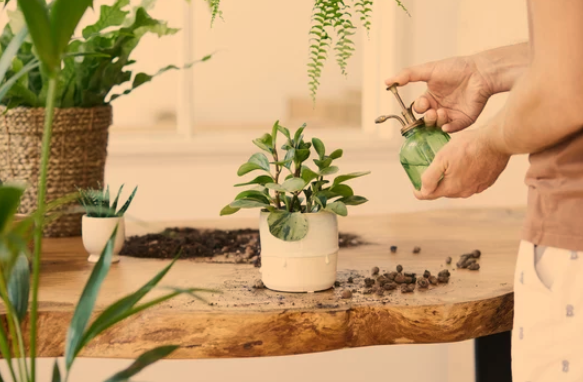
- Water Conservation While succulents are known for their drought-tolerant nature, practicing water conservation is still essential. Collect rainwater to use for watering, repurpose excess water from indoor plants, and consider using a drip irrigation system for your outdoor succulent garden to minimize water waste.
- Composting and Soil Enrichment Composting kitchen scraps and organic waste not only reduces landfill waste but also produces nutrient-rich compost for your succulents. Add compost to your potting mix or use it as a top dressing to provide natural, slow-release nutrients to your plants.
- Sustainable Pest Control Avoid using harsh chemical pesticides whenever possible, as they can harm beneficial insects and pollinators. Instead, encourage natural pest control by attracting ladybugs, lacewings, and other beneficial predators to your garden. Additionally, regularly inspecting your plants for early signs of pest infestations can prevent the need for drastic interventions.
Advanced Succulent Care: Cacti and Rare Varieties
- Caring for Cacti Cacti are a subcategory of succulents with their unique characteristics and care requirements. They are adapted to even more extreme arid conditions, often found in desert regions. Understanding the specific needs of cacti, such as fast-draining soil, minimal water requirements, and the right amount of sunlight, will help you successfully cultivate these impressive plants.
- Collecting Rare and Unusual Succulents For seasoned succulent enthusiasts, collecting rare and unusual succulents can become a rewarding hobby. From variegated varieties to unique hybrids, the world of rare succulents offers a wide array of specimens to explore. However, caring for rare succulents may demand more attention and precise care due to their specific needs.
The Future of Succulent Care: Sustainability and Conservation
- Succulent Conservation Efforts As the popularity of succulents continues to grow, so does the risk of overharvesting and endangerment of wild populations. Many succulent species face habitat loss and illegal collection, threatening their survival. Supporting and participating in conservation efforts, such as buying from reputable nurseries and avoiding purchasing plants collected from the wild, can contribute to the preservation of these unique plant species.
- Sustainable Succulent Cultivation and Trade As the demand for succulents rises, it is essential to promote sustainable cultivation practices and responsible trade. Choosing nurseries that prioritize ethical growing methods, eco-friendly packaging, and avoid using harmful chemicals is crucial for supporting sustainable succulent cultivation.
Warp Up
Succulent plant maintenance is, thus, a creative journey that fosters a closer relationship with nature. You can build a thriving and alluring succulent collection thanks to their particular adaptations and care needs.
To create a community of succulent lovers committed to the preservation and enjoyment of these magnificent plants, embrace sustainable techniques, discover rare species, and share your passion for succulents with others.
Wishing you happiness, progress, and a never-ending passion for these wonderful living sculptures on your path of succulent care. Happy cactus growing!

